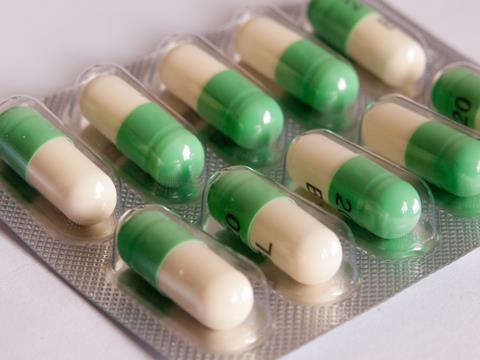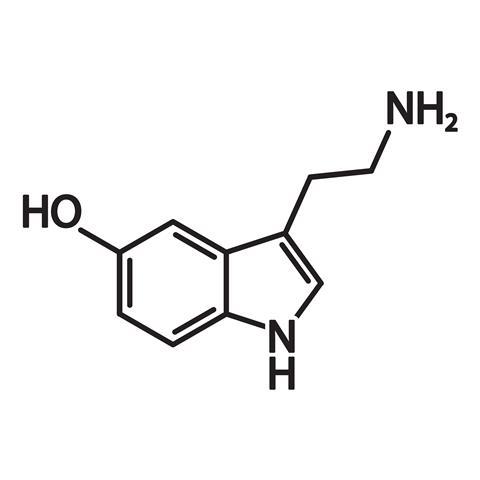Meera Senthilingam
This week, Hayley Birch fills us with happiness…
Hayley Birch
Serotonin is known as the happy molecule. As consumers of health advice, we’re bombarded with top tips for boosting our serotonin levels – instant fixes for feeling glum – based on the premise that low serotonin levels lead to feelings of sadness and depression. According to the internet, we should all be pounding on treadmills and scoffing turkey sandwiches to make ourselves feel better. But while it’s true that turkey contains tryptophan – the essential amino acid that our bodies need to make serotonin – the connection between serotonin and our state of mind is rather more complex.

Since the launch of fluoxetine, better known as the antidepressant Prozac, in 1987, we’ve been convinced that serotonin levels are responsible for our moods. We think of depression as a chemical imbalance in the brain caused by subnormal levels of serotonin. But is that really how serotonin works? Serotonin is a neurotransmitter – it passes messages between nerve cells. Antidepressants like Prozac are thought to stop cells reabsorbing serotonin. So the idea is that they increase levels of serotonin in the spaces between brain cells, where the chemical does its job. The upshot is that patients feel better. But we’re not so sure any more that recovery from depression is due to a straightforward hike in serotonin levels.
Another enticing theory, supported by Princeton psychologist Barry Jacobs, is that people get depressed because they stop producing new brain cells. Curiously, studies have suggested that the happy molecule, serotonin, is involved in the growth of new cells. In 2013, for example, German scientists showed that running causes mice to grow new brain cells. Mice that can’t produce serotonin can’t grow new brain cells. Perhaps a hint at why pounding it out on the treadmill can banish the blues – not as a result of a simple increase in serotonin levels, but of more complex processes involving serotonin in the restructuring of brain tissues. Other researchers have suggested that serotonin is involved in strengthening communications between brain cells, and that this is how antidepressants work.

We have to remember that serotonin – known to chemists as 5-hydroxytryptamine – was only discovered after the Second World War, so we’re still figuring out what it does and how. Half a century isn’t long when you’re talking about a chemical as prolific as serotonin. Because despite the focus on mood, this monoamine plays a role in appetite, sleep, regulating body temperature, heart function, gut function and myriad other neurological and physiological processes. It has so many receptors that they’re divided into seven different subfamilies. As a side note, applying the so-called ’happy molecule’ directly to the skin causes intense pain and blistering. Counter intuitive, perhaps. But less so when you consider that it’s serotonin that’s thought to be partly responsible for the irritation caused by a wasp sting.
It was Maurice Rapport, Arda Alden Green and Irvine Page who published a paper announcing their discovery of serotonin in 1948. The molecule, isolated from ox blood, was referred to as a vasoconstrictor because of its action on blood vessels, and the authors noted the similarity of its chemical and biological activity to those of adrenaline. They also proposed a chemical structure similar to tryptophan, the molecule from which it’s synthesized in the brain. But it didn’t become clear until five years later, when scientists at the National Institute for Medical Research in London found the same substance in the guts of rats, dogs, guinea pigs and other animals, that it was actually the chemical that an Italian scientist, Vittorio Erspamer, had written about back in the 1930s. Erspamer had named this substance enteramine. Both groups showed that it could make gut cells contract. But it was christened by Page and his colleagues as serotonin and finally listed as 5-hydroxytryptamine, or 5-HT, in chemical catalogues.
By the 1950s, the first antidepressants were being tested in a psychiatric hospital in Switzerland. The idea that they worked by inhibiting serotonin uptake didn’t emerge until the 1960s, and during the following decade an earnest attempt began to make better drugs with fewer side effects. In 1974, we were presented with fluoxetine – Prozac – a relative of the antihistamine diphenhydramine, or Benadryl. It appeared first as Lilly 110140 in the 15th August issue of Life Sciences. Even now, despite being one of the most widely prescribed antidepressants, scientists are still arguing about how it works. And they’ll have to keep arguing about it until we figure out exactly how serotonin fits in. Because for all that’s written about ‘the happy molecule’, there’s plenty we still don’t know.
Meera Senthilingam
Science writer Hayley Birch there with the joyful, yet still somewhat mysterious chemistry of serotonin.
Next week, more mystery…
Helen Scales
In Nigeria in 1869, a group of French troops visited their physician, Dr J. Meynier, suffering from the same symptoms. Their stomachs ached, their mouths were dry, and they all felt weak and nauseous. Meynier might have had trouble diagnosing their condition based on these symptoms alone until his patients admitted to one further problem
Meera Senthilingam
And to find that out, you’ll have to join Helen Scales in next week’s Chemistry in its Element. Until then, thank you for listening, I’m Meera Senthilingam.













No comments yet